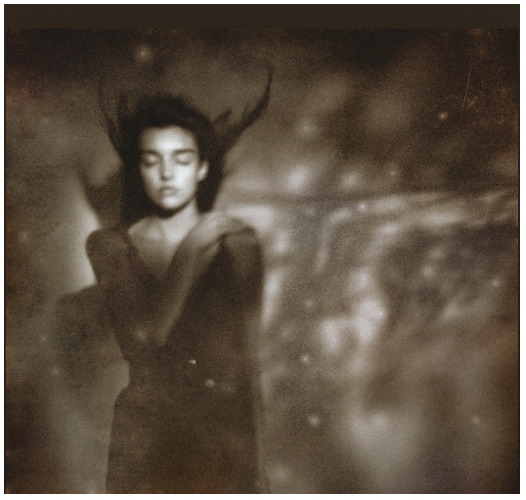I woke up yesterday haunted by a sweet, sorrowful song that is relatively unfamiliar to me.
Sleep studies have shown a few interesting things in (relatively) recent years, one of which is the idea that while humans naturally sleep for 8 hours, a pattern emerges when distractions of artificial lights and alarm clocks are removed, where the sleep occurs in two four-hour stages, and that it’s a modern invention to think we should sleep through the whole night. This pattern is referred to as Biphasic Sleep.

The theory goes that artificial light, a recent addition to the world, keeps us up long past the sunset, when our natural circadian rhythms start winding us down for bed. A hundred years ago, so this thinking says, it would be quite natural to wake up in the middle of the night, lie awake (relatively) for an hour or two, then slip back into sleep (NIH article).
That hour or two is an interesting time, cognitively. It is a creative time, half-conscious, where ideas come, or we solve problems. Or we spend it making love. I am more curious about what is happening in our minds and consciousness as we bridge the two deep sleep cycles. The powerful dreams come just at the beginning of this waking period. So too do these times when I run, over and over, a song track in my mind. It comes unbidden, and has a life of its own, and I am simply here to understand why.
Which makes this song, ‘Song To The Siren’ by This Mortal Coil, interesting. It’s one I recently added to my rotation, but that’s not unordinary.
Why this one?
First, it makes the hair on my neck stand up listening to it. I am overcome with a powerful feeling of loss and nostalgia. The halcyon days of youth become a faded dream I just woke up from. Half-memories, half promises; of heartbreak and hardship. I don’t even know the words, but the feeling is always there, as soon as the song starts playing, and long after it ends. A timeless state. Just like the minutes and hours at the end of a sleep period.
The first thing I do usually when this happens is listen to it in the morning, right after meditating. I listened to this one on single-song repeat for hours. Its mystery slowly unfolds though I am still at a loss for why my subconscious singled it out. It begs the question: what is happening in my life that this is a message for me now, from my deeper self? I am on my own in a foreign country, dealing with the vagaries of noise pollution and a community that cares deeply about some good things, but not at all about things like health standards, building codes, or peace and quiet.
Sometimes it is just a feeling, a mood. Nothing more.
This song came to me through a MasterClass I was watching by David Lynch, talking about the creative process and filmmaking. He wanted to use it for ‘Wild At Heart’ but it was out of his budget… but he loves this song, so I listened to it. And it is very Lynchian… moody, mystical, dark but soft. I am in pursuit of my own creative forces, particularly in writing fiction, and I have been practicing thinking about mood in new ways. During my photography career I was very focused on concept and technical skill, but not so much on mood. I am trying it on as a worthy pillar for good fiction and good storytelling. So I have set myself up to try to feel it, like David Lynch does. He talks about ‘falling in love’ with an idea. I guess this song is the memory of that love. It resonates with me as I emerge from a yearlong period of mourning for the end of my own marriage.
What is it we lose, when we forego this period of trance-like deep creative half-dream? I believe this is the time we integrate our conscious thoughts with the deep well of subconscious information processing we do all day, every day. We clear out the garbage, tidy the house, connect our will to circumstance, and ask ourselves for help. This series about dreams and quiet voices is an exploration of my own trance state, and what I can learn, and how I can benefit from paying attention to it. For now, I will simply feel the ethereal, moody dream that I seem to gravitate towards at this time in my life. I will give it time and space to be. So it is!
More from this series:
Dreams and Quiet Voices #2
Dreams and Quiet Voices #1

